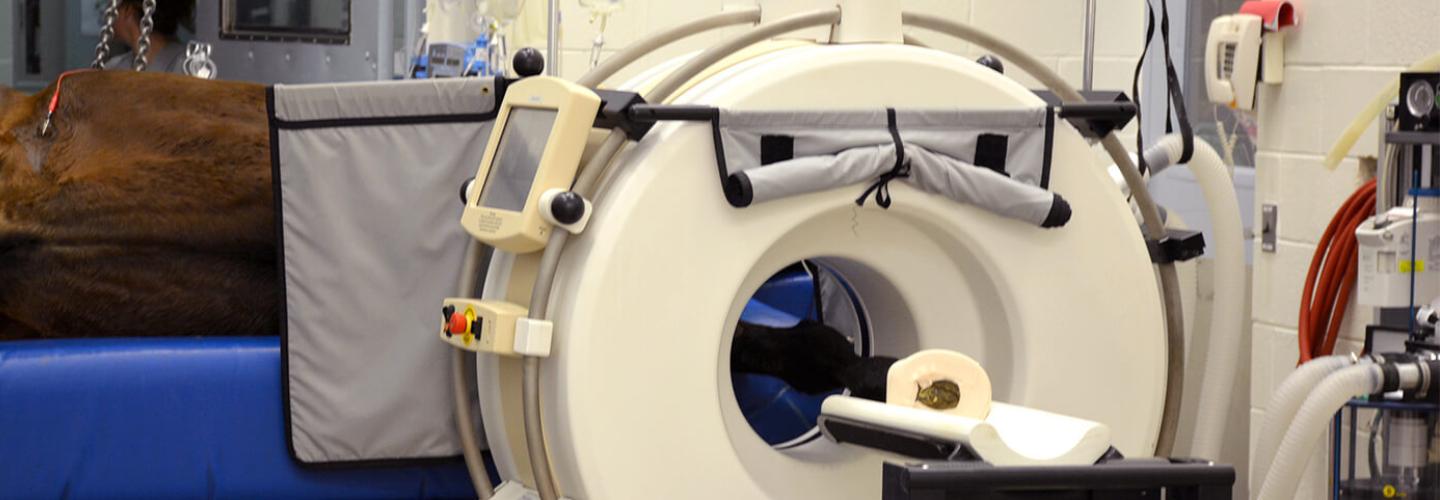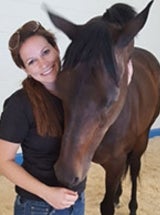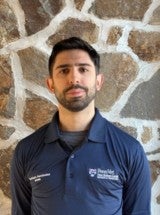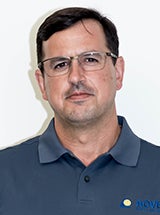
Surgery
What we do
Our surgery service is one of the region’s best resources for sport horses, food and fiber animals, and other large species. Our faculty pursue research in the areas of orthopedics and biomechanics, as well as soft tissue disorders.
Our faculty serve to mentor the next generation of large animal surgical leaders, the New Bolton Center surgery team undertakes research on large animal orthopedics, biomechanics, and soft tissue disorders.
Our Services
Range of Treatment
New Bolton Center’s surgery team, headed by boarded and dually boarded large animal surgeons, offers a full range of services from diagnosis through post-operative treatment.
Food Animal Surgery
The Food and Fiber Animal Surgery Service provides complete state-of-the-art surgical treatments of farm animal patients (cattle, sheep, goats, pigs, and alternative livestock such as llamas, alpacas and deer).
Service highlights include:
Orthopedic Surgery
- Fractures, arthroscopy, joint and bone infections, limb deformities, etc.
Gastrointestinal Surgery
- Displaced abomasum, rumenotomy, rumenostomy, intestinal obstruction, cecal problems, laparoscopy, etc.
Urogenital Surgery
- Urolithiasis (urinary blockage), C-section, castration, cryptorchidism, inguinal and scrotal hernia, ovariohysterectomy (spay), vasectomy, etc.
Head and Neck Surgery
- Dehorning, enucleation, mandibular fractures, tooth root abscess, tracheotomy, sinusotomy, etc.
Other Types of Surgical Procedures
- Umbilical hernia and other complicated umbilical problems, mastectomy, teat disorders, tumor removal, etc.
Orthopedic Surgery
The surgical team and facilities at New Bolton Center offer an unparalleled level of treatment for all orthopedic conditions in the horse. Our long-standing commitment to advance equine orthopedic surgery is evidenced by expansion of CT-guided surgery, development of the pool-raft recovery system for recovery in fracture patients, and state-of-the-art surgical equipment.
Service highlights include:
- Fracture repair
- Arthroscopy
- Tenoscopy and bursoscopy
- Advanced cartilage resurfacing
- Regenerative medicine including stem cells and platelet-rich plasma
Soft Tissue Surgery
In addition to upper respiratory surgery, New Bolton Center’s surgery team addresses numerous and diverse areas of soft tissue surgery. Many of the surgeries can now be performed using minimally invasive techniques (i.e., laparoscopically), often without the need for general anesthesia.
Service highlights include:
- Laparoscopic surgery for treatment of cryptorchids, ovarian tumors or other urogenital problems
- Laparoscopic nephrosplenic space ablation for recurrent colon entrapments
- Urogenital surgery
- Wound and laceration repair
- Treatment of tumors, including sarcoids, melanoma, and others, with the most advanced treatment options including autologous vaccine preparation
Upper Airway Surgery
Diseases and abnormalities of the upper airway cause poor performance in sport horses. Our New Bolton surgeons specialize in upper airway surgery, providing issue-specific diagnostics and innovative surgical treatment approaches.
Service highlights include:
- Modified laryngoplasty (tieback) for treatment of laryngeal hemiplegia
- Outpatient transendoscopic laser surgery for removal of growths or correction of epiglottic entrapment
- Outpatient dental treatment or extractions performed by a certified veterinary dentist
- Outpatient sinoscopy for evaluation and treatment of sinus disease
- Tieforward procedure for treatment of palate displacement
Supportive Services
We offer additional surgery procedures within the following services, Cardiology, Dental, Ophthalmology, and Reproduction.
At our state-of-the-art facility, we collaborate with our other services in a variety of advanced veterinary techniques to ensure your pet receives the highest quality care.
These services are:
Surgery Facilities
New Bolton Center’s Hospital for Large Animals provides a standard of care that is internationally renowned. With a long history of excellence, it enjoys one of the largest caseloads of any academic large animal hospital in the country. The hospital provides inpatient and outpatient services for horses, cattle, camelids, pigs, goats, sheep, and other large animals, accommodating more than 4,900 patient visits each year.
Our Care Team

Section Chief of Large Animal Surgery
Marie-Eve Fecteau, DVM, DACVIM – LA
Professor of Farm Animal Medicine and Surgery (CE)
Clinicians
Residents, Interns, and Staff

Louis Carusillo, DVM

Anthony Cervone, DVM

Jacqueline Chevalier, DVM, MSc

Sarah Ciamillo, DVM

Justine Cianci, VMD

Kayla Even, VMD

Arturo Fernández, DVM

Samuel Gonzalez, DVM

Kaylee Montney, DVM

Meredith Rudnick, DVM

Hannah Quail, DVM

Amanda Santos, VMD

Bryana Smith, DVM
Kate Reburn, CVT
Research in Surgery
New Bolton Center’s Surgery faculty are actively engaged in innovative research, including stem cell therapy, bone growth and regeneration, and stimulating the synthesis of cartilage components in the treatment of equine arthritis, positioning New Bolton and Penn Vet as an international leader in the field of equine musculoskeletal research.
Animal Model Core & Comparative Orthopedic Research Laboratory
The Animal Model Core & Comparative Orthopedic Research Laboratory (AMC-CORL) is part of the Institute for Medical Translation at Penn Vet New Bolton Center. It functions as an ecosystem for medical translation and multidisciplinary collaboration providing a bridge to support the continuum from discovery to invention to innovation.
Ortved Orthopedic Regenerative Medicine Laboratory
At the Ortved Laboratory, we are focused on understanding the pathogenesis of PTOA and developing regenerative medicine therapies to improve musculoskeletal healing using the horse as a model for human disease. Specifically, we are interested in gene, signal, and cell-based therapies to improve cartilage repair and prevent osteoarthritis. Dr. Ortved’s clinical work as an equine orthopedic surgeon facilitates translation of this research from bench to clinic floor.








